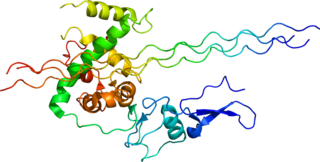Clinical significance
Depending on genetic and nongenetic factors including alterations in gene expression, splice variations, post-translational modifications, and the chain-specific assembly of particular α-chains, different organs can be affected during their development and in the adult life span. [2]
Collagen IV has been the focus of extensive research ranging from biochemistry perspectives, to pathology, and genetic disorders. This is the only collagen type that is encoded by six different genes. The six α-chains of collagen IV can recognize each other with incredible specificity and will assemble into unique heterotrimers. After secretion into the extracellular membrane, these molecules will further interact to form higher molecular organizations. These, along with other proteins, will form unique basement membranes in tissue-specific manners. Through interactions with specific cellular receptors such as integrins, the basement membrane collagen IV networks not only provide structural support to the cells and tissues, but they also affect the biological rate during and after the development. New discoveries keep unraveling information about genetic mutations, biosynthesis, molecular assembly, and network formation of type IV collagen, and this increases the understanding of the critical role of this collagen in health and disease. [2]
Congenital Cataract
In humans, a novel mutation of the COL4A1 gene coding for collagen type IV was found to be associated with autosomal dominant congenital cataract in a Chinese family. This mutation was not found in unaffected family members or in 200 unrelated controls. In this study, sequence analysis confirmed that the Gly782 amino acid residue was highly conserved. [12] This report of a new mutation in the COL4A1 gene is the first report of a non-syndromic autosomal dominant congenital cataract that highlights an important role for collagen type IV in the physiological and optical properties of the lens. [12]
Cardiovascular Disease
Type IV collagen is a main component of basement membranes in various tissues (arteries included). [13]
Over the past decade, studies have repeatedly found single-nucleotide polymorphisms located in the collagen ( COL) 4A1 and COL4A2 genes to be associated with cardiovascular disease, and the 13q34 locus harboring these genes is one of the 160 genome-wide significant risk loci for coronary artery disease. COL4A1 and COL4A2 encode the α1- and α2-chains of collagen type IV. This is a major component of basement membranes in various tissues including arteries. There are clinical reports linking 13q34 to coronary artery disease, atherosclerosis, and artery stiffening from experimental studies based on vascular cells and tissue. [13]
Additionally, in the cardiovascular field, the COL4A1 and COL4A2 regions on chromosome 13q34 are a highly replicated locus for coronary artery disease. In a normal wall of arteries, collagen type IV acts to inhibit smooth muscle cell proliferation. Accordingly, it was demonstrated that protein expression of collagen type IV in human vascular smooth muscle cells is regulated by both SMAD3 protein and TGFβ mediated stimulation of mRNA. [14] Altogether, it was concluded that the pathogenesis of coronary artery disease may be regulated by COL4A1 and COL4A2 genes. [14]
Pancreatic Cancer Cells
This type of collagen can cause an increase in pancreatic cancer cells and is able to inhibit apoptosis through an autocrine loop. [4]
This autocrine loop provides essential cell survival signals to the pancreatic cancer cells. [4]
Type IV collagen is expressed close to the cancer cells in vivo, forming basement membrane like structures on the cancer cell surface that colocalize with the integrin receptors. The interaction between type IV collagen produced by the cancer cell, and integrins on the surface of the cancer cells, are important for continuous cancer cell growth, maintenance of a migratory phenotype, and for avoiding apoptosis. [4]
Scurvy
Scurvy is a nutritional deficiency of water-soluble vitamin C or ascorbic acid. It is rare in the developing world and is mostly seen in infants, the elderly, and alcoholics, all who may have inadequate nutritional intake and malnutrition. [5]
Patients may present with general fatigue, weakness, poor wound healing, anemia, and gum disease. Clinically, one of the first signs of scurvy occurs on the skin and manifests as perifollicular hemorrhage where follicles of the skin are plugged with keratin. These areas appear as bruise-like spots around the hair follicles. There can also be fragile hairs arranged in a corkscrew confirmation. [5]
A lack of ascorbic acid leads to epigenetic DNA hypermethylation and inhibits the transcription of various types of collagen found in skin, blood vessels, and tissue. [15]
Collagen Hybridizing Peptides
Collagen, the major structural component of nearly all mammalian tissues, undergoes extensive proteolytic remodeling during developmental states and a variety of life-threatening diseases such as cancer, myocardial infarction, and fibrosis. While degraded collagen could be an important marker of tissue damage, it is difficult to detect and target using conventional tools. As a result, a collagen hybridizing peptide is specifically hybridized to the degraded, unfolded collagen chains, can be used to image degraded collagen and inform tissue remodeling activity in various tissues. [16]
Labeled with 5-carboxyfluorescein and biotin, the collagen hybridizing peptide can enable direct localization and quantification of collagen degradation in isolated tissues within pathologic states ranging from osteoarthritis and myocardial infarction, to glomerulonephritis and pulmonary fibrosis, as well as in normal tissues during developmental programs associated with embryonic bone formation and skin aging. [16]
The general correlation between the level of collagen remodeling and the amount of denatured collagen in tissue, show that the collagen hybridizing peptide probes can be used across species and collagen types (including type IV collagen), providing a versatile tool for not only pathology and developmental biology research, but also disease diagnosis via histology. [16]
An autosomal recessive encephalopathy associated with mutations in this gene has also been reported. [17]
Increased glomerular and mesangial deposition of collagen IV occurs in diabetic nephropathy and increased urinary levels are associated with the extent of renal injury. [18]

















